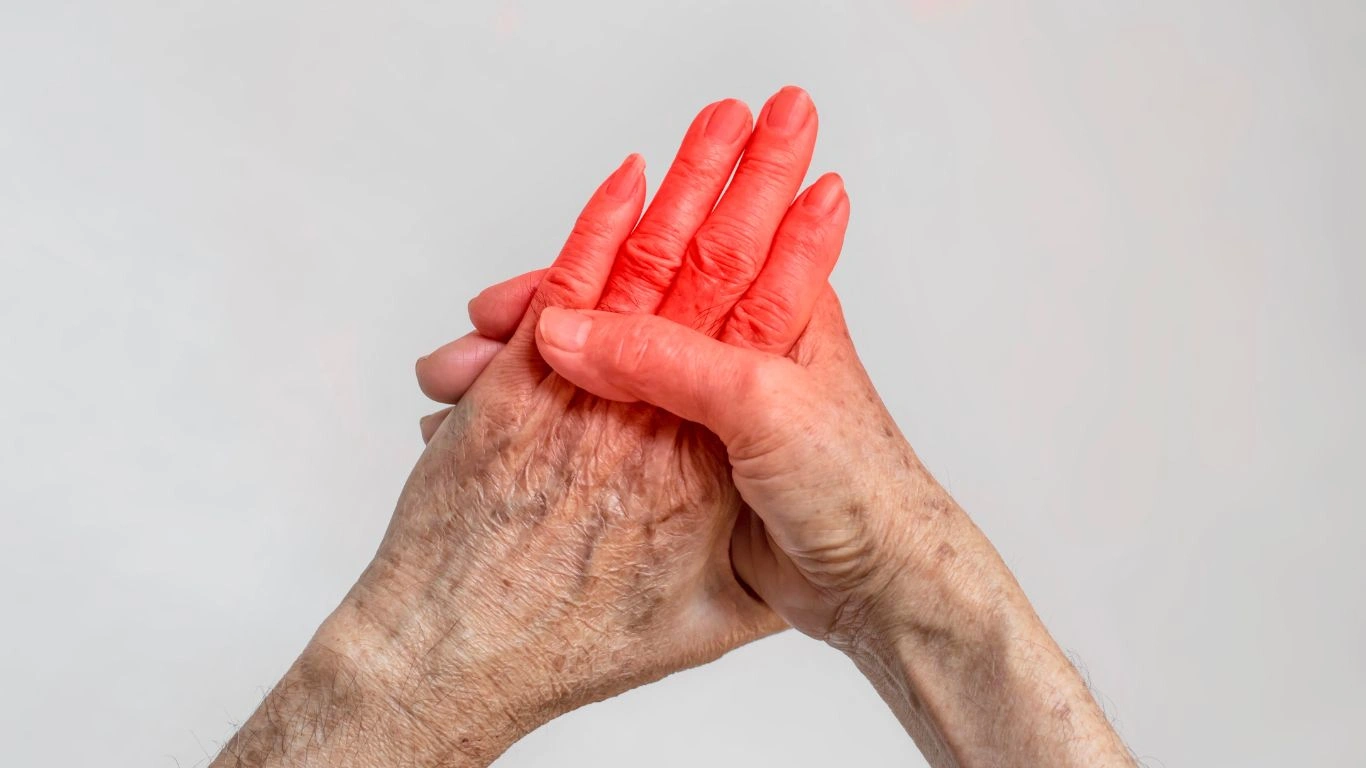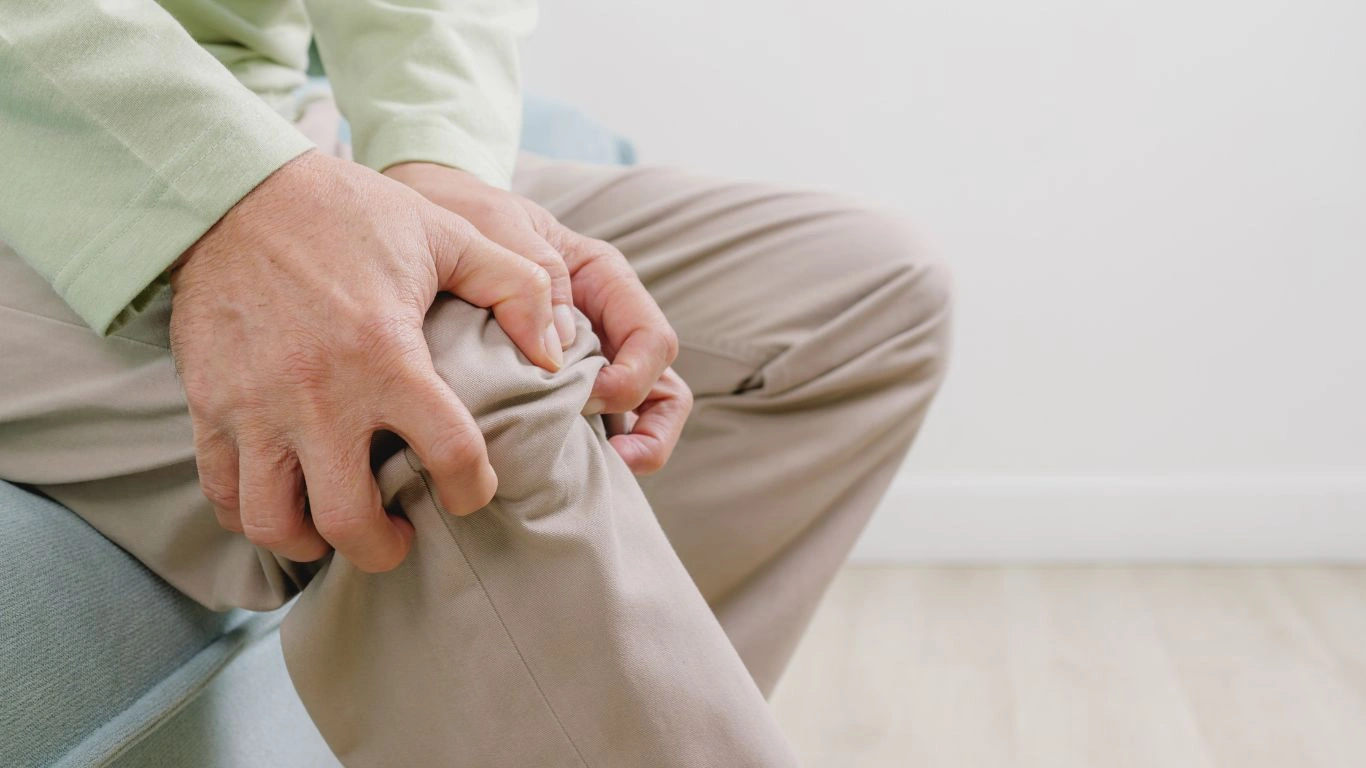Ultimate Rheumatoid Arthritis Home Exercise Plan to Ease Pain Fast
Living with rheumatoid arthritis can be a daily battle. Trust me—I’ve seen it firsthand as a rheumatology nurse practitioner, and even in my own family. The stiffness, the swelling, the sheer frustration of not being able to do what you used to. One of the most common questions I get from patients is, “Is there a rheumatoid arthritis home exercise plan I can follow without flaring up my joints?” Absolutely—and I’m here to walk you through it. We’re not talking about boot camps or intense gym sessions. This is about gentle, joint-friendly movements that can actually make life feel more doable, more mobile, and a little less painful.
Why Movement Matters in RA

If you’re living with RA, it might feel counterintuitive to move more—especially when your joints are on fire. But the truth is, regular movement is one of the best tools to reduce inflammation, improve joint mobility, and boost mood. I’ve seen patients go from struggling to open a jar to confidently walking their dogs every morning just by committing to a consistent movement routine. The trick is finding the right exercises, the kind that love your joints as much as they love you back.
How Exercise Helps Ease RA Symptoms
- Reduces stiffness: Regular movement keeps joints lubricated and prevents them from locking up.
- Strengthens muscles: Stronger muscles help support your joints, reducing the strain on them.
- Boosts circulation: Improved blood flow can help decrease inflammation.
- Supports mental health: Gentle movement boosts endorphins and helps manage chronic pain depression.
Back when I worked in a community clinic, I met a retired teacher named Joan. She was initially skeptical about adding exercise into her routine—she feared it would worsen her pain. We started with basic stretches and added a bit of water aerobics. Within three months, her flare-ups had lessened and her energy had improved. It wasn’t magic, just mindful movement.
Designing Your Rheumatoid Arthritis Home Exercise Plan

Creating your own rheumatoid arthritis home exercise plan doesn’t have to be complicated. In fact, the simpler the better—especially when you’re just starting out. I always recommend patients begin with low-impact activities and slowly build up as tolerated. Here’s how I guide my own patients when they ask where to start.
Start with Gentle Range-of-Motion (ROM) Exercises
These are non-negotiable. They’re simple, slow movements that help maintain flexibility without putting pressure on the joints. Think shoulder rolls, wrist circles, or gently stretching your fingers out and in.
- Neck tilts side to side and front to back
- Wrist bends and rotations
- Finger spreads and curls
- Seated leg extensions
I recommend doing these first thing in the morning—especially when the stiffness is at its worst. I even keep a sticky note on my bathroom mirror to remind me and my patients that a little movement goes a long way.
Incorporate Low-Impact Aerobics
Once you’re comfortable with ROM exercises, consider adding some light cardio. This could be a slow walk around your living room, a stroll around the block, or a few minutes on a stationary bike if you have one. The idea is to get your heart rate up slightly without overexerting your joints.
- 5-10 minute daily walks
- Gentle seated marching
- Light dancing to your favorite playlist
Pro tip: pick a time of day when your pain is lowest. For many people, mid-morning is a sweet spot. A patient of mine once said she made her daily walk a non-negotiable part of her routine—like brushing her teeth. It’s made a world of difference for her joints and her mood.
Don’t Forget to Stretch
Stretching isn’t just for yoga lovers. It’s essential for keeping tendons and muscles supple, especially around inflamed joints. After any activity, take 5–10 minutes to do some static stretches. Hold each one for at least 20–30 seconds and breathe through the stretch—don’t bounce or force it.
One of my favorite routines includes:
- Hamstring stretches on the floor or a chair
- Gentle shoulder stretches using a towel
- Wall-assisted calf stretches
As you build your routine, listen to your body. Some soreness is normal, especially at the beginning. But if anything causes sharp pain or increased swelling, stop and reassess. There’s no shame in adapting or taking a rest day. This isn’t about perfection—it’s about progress.
Strength Training for Joint Support

Now, let’s talk about strength training. I know, the word “strength” might sound intimidating when you’re dealing with joint pain, but bear with me—this isn’t about lifting heavy weights or turning your living room into a gym. Strength training in a rheumatoid arthritis home exercise plan is about building the muscles around your joints to give them the support they desperately need.
When I first started introducing strength work into my RA patients’ routines, I always emphasized two things: go slow, and use light resistance. Resistance bands, light hand weights (think soup cans), or even bodyweight exercises can work wonders if done consistently.
Simple Strength Moves to Try at Home
- Wall push-ups: Great for building upper body strength without stressing the wrists or elbows.
- Chair squats: Using a sturdy chair, gently lower and lift yourself for lower body strength.
- Bicep curls: Use light dumbbells or resistance bands while seated or standing.
- Ankle pumps and toe taps: Fantastic for circulation and lower leg endurance.
One of my patients, Miguel, swore by his resistance band routine. He kept it super simple—just five moves, three times a week. After a couple of months, he noticed he could walk up stairs with less pain. Small wins like that really add up.
Listen to Your Body: Modifications & Rest

It’s easy to get caught up in doing everything “right”—but with RA, flexibility is key. Some days your body just won’t cooperate, and that’s okay. I always tell patients: be kind to your joints, not critical. Modify exercises when needed, skip a day if you’re flaring, and never push through intense pain.
Tips for Managing Flare Days
- Do a shorter routine or skip high-movement exercises entirely.
- Focus on breathing and gentle stretching to ease stiffness.
- Use heat therapy before movement and ice after if needed.
- Track what activities trigger more discomfort to adjust your plan.
There was one winter when my own joints (yes, I have mild RA myself) were especially achy. I ditched my usual walk and replaced it with 10 minutes of chair yoga and a warm compress. It wasn’t ideal, but it kept me consistent, and that’s the real secret.
Building a Weekly Routine That Works for You

Consistency over intensity. That’s the golden rule I always emphasize when helping someone build their rheumatoid arthritis home exercise plan. You don’t need to work out for hours or do something different every day. Instead, find a rhythm that respects your limits while still giving your body what it needs.
Sample Weekly Routine
- Monday: 10 minutes ROM exercises + short walk
- Tuesday: Light strength training + upper body stretching
- Wednesday: Rest or gentle yoga
- Thursday: Short walk + lower body strengthening
- Friday: ROM exercises + balance drills (e.g., standing on one foot holding a chair)
- Saturday: Stretch session or swimming if available
- Sunday: Rest and recovery
You don’t have to follow this to a T. In fact, I encourage patients to tweak it based on how they feel each week. The goal is to make movement a part of your life—not a burden. And remember, even 5 minutes counts.
One more thing—document your progress. Whether it’s jotting down how you felt after each session or snapping a selfie after a walk, tracking your journey can be so encouraging. I’ve had patients tell me they never realized how far they’d come until they looked back at what they could do two months ago compared to today. That’s powerful stuff.
Keep It Realistic and Rewarding
Lastly, reward yourself. No, seriously. Celebrate the wins. Made it through your weekly plan? Treat yourself to a cozy evening with a warm bath or your favorite show. Positive reinforcement works. RA doesn’t get to steal your joy or your strength—you just have to work with your body instead of against it.
Stick with me, because in the next section we’ll dive into specific tools and apps that can make managing your movement even easier, plus some overlooked tricks for long-term success you’ll want to bookmark.
Helpful Tools and Resources to Support Your Exercise Journey

One thing I’ve learned over years of working closely with rheumatoid arthritis patients is that having the right tools can make a world of difference. Whether it’s an app to remind you to move, a sturdy resistance band, or simple props to assist with stretches, these little helpers can boost motivation and keep you on track with your rheumatoid arthritis home exercise plan.
Personally, I often recommend a few go-to resources to my patients that blend education, ease, and encouragement all in one place.
Apps and Online Programs
- Joint-Friendly Exercise Apps: Apps like MyFitnessPal or FitOn have customizable workouts, including low-impact options perfect for RA. They let you set reminders, track progress, and offer videos to ensure you’re moving safely.
- Yoga and Stretching Platforms: Online services like Yoga with Adriene or Glo offer gentle yoga sessions tailored for chronic pain and joint health. I always encourage patients to start with beginner or chair yoga classes to avoid overstretching.
- Rheumatology Association Resources: Trusted organizations often share free downloadable guides and videos. For example, the American College of Rheumatology (https://www.rheumatology.org/) provides excellent patient education materials on exercise and self-care.
Using technology this way can help you stay consistent even on days when motivation dips. Plus, seeing your progress documented—whether through an app or journal—can be incredibly empowering.
Nutrition and Lifestyle: Your Partners in Joint Health

While exercise plays a starring role in managing RA symptoms, I can’t stress enough how much nutrition and lifestyle choices support your journey. In my experience, patients who combine movement with a balanced diet and stress management see better results—not just physically but emotionally, too.
Foods That Fight Inflammation
Anti-inflammatory foods can complement your exercise plan by calming down the joint swelling and discomfort. Here are some staples I often discuss with my patients:
- Fatty fish like salmon and mackerel (rich in omega-3s)
- Colorful veggies such as spinach, kale, and broccoli
- Berries, full of antioxidants
- Nuts and seeds
- Whole grains instead of refined carbs
On the flip side, reducing processed foods, sugary snacks, and excessive alcohol can help keep flare-ups at bay.
Rest and Stress Management
Living with RA means paying attention to more than just your joints. Stress can be a major flare trigger, so incorporating mindfulness techniques like meditation, deep breathing, or even light journaling can calm your nervous system. Combine that with quality sleep, and you’re giving your body the best chance to heal and stay resilient.
One patient I worked with, Lisa, found that integrating short mindfulness sessions before her gentle stretches helped reduce her pain perception. It’s little things like this that add up over time.
Working with Your Healthcare Team
Remember, your rheumatoid arthritis home exercise plan is just one piece of the puzzle. It’s important to keep open communication with your rheumatologist, physical therapist, or nurse practitioner—like myself—who can tailor recommendations based on your unique condition.
For example, if you’re experiencing a particularly stubborn flare, they might suggest adjusting your medication or modifying your exercise intensity. That partnership between you and your healthcare team is crucial for safety and long-term success.
When to Seek Professional Guidance
- Sudden worsening of joint pain or swelling
- New symptoms like numbness or weakness
- Difficulty performing daily tasks despite home exercises
- Questions about which exercises are safe during flares
Don’t hesitate to reach out. Your healthcare providers are your biggest allies in this journey.
References
- American College of Rheumatology
- Arthritis Foundation
- Centers for Disease Control and Prevention – Arthritis
Disclaimer
The information provided here is intended for educational purposes and does not replace professional medical advice. Always consult your healthcare provider before beginning any new exercise regimen, especially if you have rheumatoid arthritis or other chronic health conditions. Individual needs may vary, and your healthcare team can help tailor a safe and effective plan just for you.

Tarra Nugroho is a dedicated Nurse Practitioner with a strong foundation in family and preventive care. She brings both compassion and clinical expertise to her practice, focusing on patient-centered care and health education. As a contributor to Healthusias.com, Tarra translates medical knowledge into clear, empowering articles on topics like women’s health, chronic disease management, and lifestyle medicine. Her mission is simple: help people feel seen, heard, and informed—both in the clinic and through the content she creates. When she’s not caring for patients, Tarra enjoys weekend hikes, plant-based cooking, and curling up with a good health podcast.






